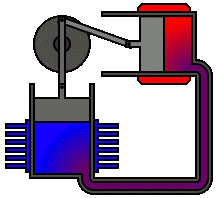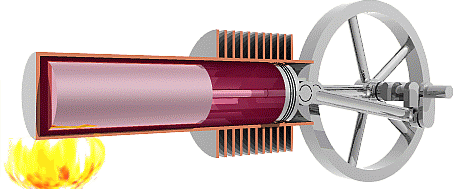![]() You don't need to be an 'investor' to invest in Singletrack: 6 days left: 95% of target - Find out more
You don't need to be an 'investor' to invest in Singletrack: 6 days left: 95% of target - Find out more
Following on from this thread:
http://www.singletrackworld.com/forum/topic/qu-for-the-electronerds
I got my hands on a pair of thermocouples for a couple of quid each. Two PCU heatsinks for £10 and a couple of 1.5v motors for £3 each. Two rotor blades for £3.
So all in it's cost £15 or so.
And it works!
At least, the blade goes round, seems to be enough to keep sufficient heat differential across the thermocouple but it doesnt really feel like its moving much air around so I'll have a go at fabricating my own impeller sometime.
[img]  [/img]
[/img]
[img]  [/img]
[/img]
This is the second version, the first using the metal brackets and one heatsink just wouldnt transfer enough heat to the termocouple.
The second attempt was much better.
[img] [/img]
[img] [/img]
good work.
now, you just need sharper blades and some young children with inquisitive fingers...
Cool!
What happens if you try it with the pettlier device sitting directly on the stove top, with the heat sink on top of it?
How much heat does it actually move in to the room though? Surely you need a much bigger fan?
ROLF ON: can you tell what it is yet? ROLF OFF
Seriously, what is it?
Coooooool!
Ian - i tried it briefly (with an ice cube on the top 😉 ) but the fly leads are too close to the stove to leave there like that without running the risk of damaging them.
organic, read the original thread, linked in the first post.
Funky dunc - naff all! So I will try to make a better blade for it.
Needs some help with his arithmetic also.
derek - it looks to me like he's been visiting one of those far too often. In fact i suspect he may have been there all day 🙂
I would be tempted to get a solid Aluminium block for the hot side. You will be losing a lot of the temperature differential from the Heatsink doing what it was designed to do.
BTW, Did you measure the Current and Voltage?
uphill - you're right, I just didnt have a decent conductive block lying around so used the other sink.
al - maths was for just the bits I used.
£10 heatsinks
£3 motor
£1.50 blade
£3 TEC
so £17.50 if you want me to be accurate 🙂
I managed to get just over 2v out of it at its peak.
Get a larger diameter airscrew. shifts more air more efficiently. Or a higherKV motor(more RPM/V)less good for this IMHO.
Saying that, as you increase the load on the motor it will try to draw more current. I doubt the supply is enough to burn out the motor but there will be an optimum point.
Fun and games.....(insert nerd smiley)
Two PCU heatsinks for £10 and a couple of 1.5v motors for £3 each. Two rotor blades for £3.
£19 there mate. Glad you're not surveying my investment LOL111
I doubt Ill be able to find a more appropriate motor - its hard enough to find one that works at these voltages anyway.
What characteristics would a bigger air pushing screw have? If I want to make my own - i.e. what kind of ratio of surface area to void area? what kind of diameter and what kind of pitch on the blade face?
Im only using one motor and one blade.
SO £17.50
Im glad Im not using you for my conveyance. LOLZZZ!!!111thickysolictorzzzz!!!! 😉
Hmmmm. not my field of expertise
However, they are usually quoted as having 2 vital statistics. The Diameter and the pitch. Diameter is self explanatory. pitch being how far would it travel forward given one full rotation assuming no losses.
Model aeroplane sites might be a good place to ask.
Ill probably just bodge about with some bottle plastic and a glue gun I think.
Google got me this [url= http://www.giantcod.co.uk/slow-propellers-c-77_221.html ]clicky[/url]
Looks like they have ones that are thin to be use at high rpm. and these for lower rpm. What constitutes low/high I do not know but would guess you want this sort of thing.
Pick your diameter so as to have no cooling on the hot side and at 70p each you can get a few different pitch combinations for some trial and error.
But your costs were for 2 rotors WTFparttimers111
CASE CLOSED YOUR HONOUR.
You want to maximise heat conduction in the base (i.e. thin solid block of copper/alu, or take your existing one and wrap it in tinfoil, bottom half only of course) and maximise power dissipation in the top to maximise your delta T across the thermoelectric module (Which is actually a whole heap of thermocouples).
You want a motor/blade combination that provides an electrical resistance of approximately equal to the electrical resistance of the thermoelectric module, this will give you approximately peak power output from the device.
HTH
You want a motor/blade combination that provides an electrical resistance of approximately equal to the electrical resistance of the thermoelectric module, this will give you approximately peak power output from the device.
I'll never be able to work that out 🙁
I was going to wrap the bottom in aluminium tape to help.
Quite remarkably the thing has kept on running all day long so at least Im getting sufficient delta T (i.e. the top block isnt heating up too much) to keep 1.5v+ output.
Nice, eh you could power a steam engine with that stove?
Looking at the pics. I would have thought lowering the motor height would get more airflow over the cold side heat sink. That would be my first port of call.
🙂 I've a full size one of those at work Stoner, running off 3kw of electrical power 🙂 Stirlings are fascinating engines, but VERY difficult to scale.
uphill - I will lower the motor when Ive made a new blade
ck - pics please 😉
Pics to your profile email?
that'll work. ta.
Id love to make my own sterling engine but there's no way I could machine the cylinder and piston to tight enough tolerances, so I will probably have to get a kit.


